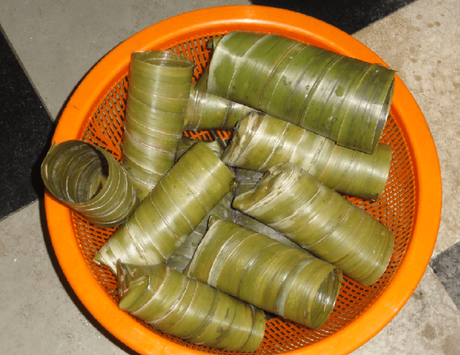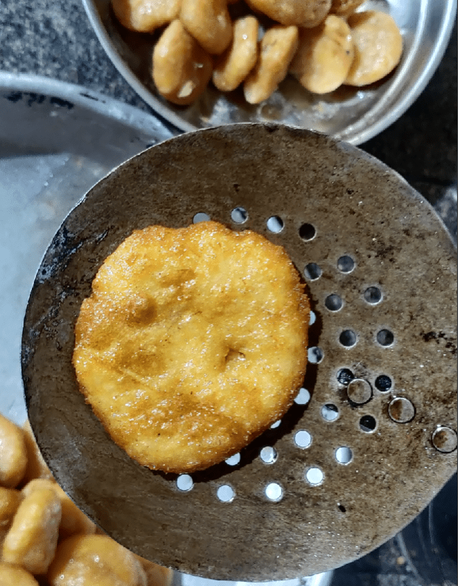There is no denying the fact, that food and religion in India are intrinsically related. Sanskrit phrases like “Annam Brahma” which means food is God, “Raso Vishnuhu” which essentially means that the essence of food is Vishnu and “Bhoktodevo Maheswarah” which means that one who consumes the food is Lord Shiva, elucidate the sacred place that food occupies in Indian culture and religion. In line with this ethos, the offering of food as naivedya (or naivedyam) or bhog is an integral part of our culture and a universal custom in most temples.
There are several rituals and guidelines that dictate the preparation and distribution of prasada or prasadam. The preparation follows all traditional practices including the use of vessles made of specific metals like copper, cooking on firewood and even without ingredients that are deemed tamasic like onion, garlic etc. It is key to note that in the Uppiliappan temple close to Kumbakonam all prasadam like puliyogare, pongal, vada etc is prepared sans salt. Just like the rest of India, temple prasadams of the south are highly revered and have a distinct taste that is almost impossible to replicate at home in spite of following the recipe to the tee!
Here is a list of some popular temple foods of the South:
Muddi Akki Kadabu: this one is a popular offering in Khumbhasi which is home to the Annegudde Vinayaka temple, Here an offering of steamed rice dumplings wrapped in screw pine leaves is considered extremely auspicious. These dumplings are made from a fermented batter of urad dal (black gram) and rice which are filled in moulds made from screw pine leaves. This practice of offering them as naivedya can be traced to the times when rice was cultivated in the region and farmers offered the first harvest of rice for the Mudi Akki Kadubu as a token of gratitude to Lord Ganesha. To read more on this offering, click here.
 Screw pine leaf moulds
Screw pine leaf moulds
Atharasa: also called Athirasa or Adhirasam this one is an offering in many temples including the Panchavarnesvar temmple in Thirunallur and Veerarghavaswamy Temple in Tiruvallur, Chennai. This delicacy which is also a festive delight is made from raw rice and jaggery and is similar to a doughnut which is deep fried. It is soft on the inside and slightly crispy on the outside.
 Atharasa
Atharasa
Kanchipuram Idli: this again is a sacred offering that is prepared at the Varadharaja Perumal Temple in Kanchipuram, Tamil Nadu. Steamed in dried mantharai leaves, the batter for these idlis is seasoned with spices like pepper, ginger, cumin etc. These long cylindrical idlis are often very large, weighing as much as 2 kilograms and are steamed in bamboo baskets. A single idli is cut and distributed as prasad.
Parimala prasada: this distinctive barfi stands out for its bright orange hue and is prepared and distributed in Raghavendra Swamy mutts all over. It is prepared using rava, sugar, saffron, ghee and cashew nuts. Offered as naivedyam, this sacred prasad is believed to cure devotes of all ailments if consumed with full faith and devotion.
Puliyogare: also called pulihora or puliyodharai, this one is popularly called tamarind rice in English. Made from an concoction of spices cooked in tamarind paste, this dish has an assortment of flavours. While puliyodharai is served in many temples across South India, the one served in the temple town of Melkote in Karnataka which is home to the Yoganarasimha Swamy and Cheluvanarayana Swamy temples is particular famous due to its impeccable taste.
